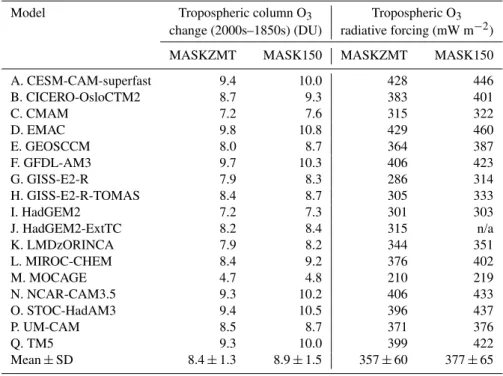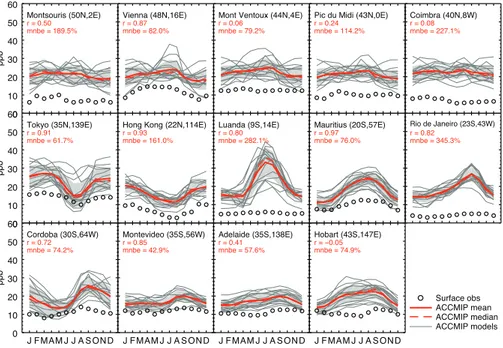Tropospheric ozone changes, radiative forcing and attribution to emissions in the Atmospheric Chemistry and Climate Model Intercomparison Project (ACCMIP)
Texto
Imagem




Documentos relacionados
12 National Climate Center, China Meteorological Administration, Haidian, Beijing, China 13 Center for International Climate and Environmental Research Oslo (CICERO), Oslo, Norway
A coupled atmospheric chemistry and climate sys- tem model was developed using the modal aerosol version of the National Center for Atmospheric Research Commu- nity Atmosphere
made observations during two recent aircraft campaigns: the Deep Convective Clouds and Chemistry (DC-3) and the Studies of Emissions and Atmospheric Composition, Clouds, and
Relationship between aerosol number concentration and cloud droplet number concen- tration (CDNC) with (a) showing that the volcanically induced cloud albedo e ff ect is larger
A coupled atmospheric chemistry and climate system model was developed using the modal aerosol version of the National Center for Atmospheric Research Community Atmosphere
Both AR4 models with prescribed ozone recovery and coupled chemistry-climate models with projected reduction of atmospheric chlorine loading all predict highly consistent
Here we simulate the air quality and radiative forcing (RF) impacts of changes in ozone, methane, and sulfate from halving anthropogenic NMVOC emissions globally and from.. 10
In this study we incorporated an interactive tropospheric sulfur chemistry scheme into a global climate-chemistry model (GCCM) (Wong et al., 2004) to estimate radiative forcing





